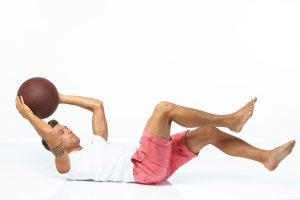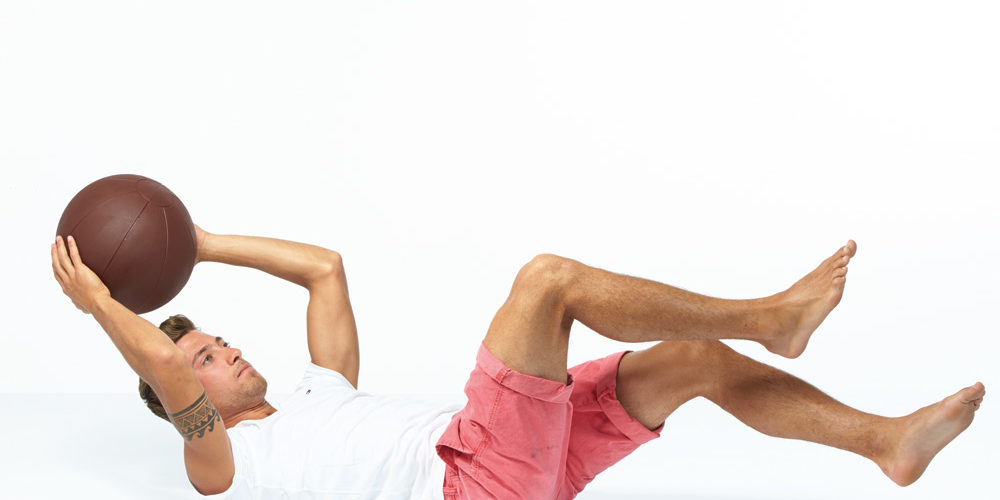“Inner stability creates outward attitude in life”
Core Training – What is it?
The CORE of your body! Your center and your power plant. Core training includes the deep muscles of your body. The training and the movement are completely derived from the middle of the body and are executed from there. The widespread assumption that movements originate from the limbs and extremities does not correspond to the whole truth. When an arm grabs something or a leg climbs up the stairs, it is widely believed that the movement takes place there too. Superficially maybe already. Seen in complete functionality, a movement always starts from the center of the body, out of the center.
The abdomen, trunk and back muscles as well as the pelvic musculature are strengthened intensively by targeted deep force training and included. The constant activation and tension of the middle of the body, in conjunction with the deep-seated muscle groups located there, ensure an upright posture. At the same time for stability in the middle, in your center of the body. All training-relevant functions and actions are controlled from there. If you perform a movement with your arms or legs, you will increase the quality of the result enormously, if this is implemented from your core or with your core power.
Your stable core – as a support in your life!
The column – your strong trunk, serves as a support for your life and at the same time holds your physical structure.
Doing well with your pillar will have a positive effect on your whole health in life. Because all in all is connected with each other!
Another relevant advantage of good core stability, the low-lying muscles around the spine, is never considered isolated, but always in so-called muscle loops and muscle chains. Several muscles are connected, connected. Everything is one in your body. The benefit here is obvious, you train holistically and thus your body completely fit, tight, firm, stable, powerful. All your power comes from your midst.
An efficiently trained center of the body is so important because all functional movements of the body depend on it. The foundation of the movements arises when the torso, pelvis and shoulders act harmoniously and stably.
In addition, the general vulnerability to injury is reduced when working well at depth and being fully functional. Movements e.g. on unstable surfaces such as snow / beach running, mountain sports with roots, slopes, stones, etc. win very much safety and stability. As an athlete in addition to the specific training, as well as a movement beginner, it is in my opinion indispensable to take care of the stable core muscles.

Core training for an upright posture
How often do we see people around us in a sloppy, unnatural, bent-forward posture. Completely bent over life. For one, it may be missing here in the inner, mental attitude.
On the other hand and unfortunately very often, this sight also provides a deformed, weakened, until then intensively shortened torso, abdominal and back muscles. The upright body position and spine corresponds to a natural, slight S-shape. In the cervical and lumbar spine, this bends forward, a so-called lordosis, in the thoracic spine and in the sacrum slightly backwards, to a kyphosis.
Discs and organs
The sight of an upright posture is a positive effect of the core training.
Even more important is the space and space for the organs. If they can move and unfold better through a stretched posture, the functionality and supply is guaranteed much cheaper than buckled, narrow and restricted in the pre-bent position. In addition, the spinal cord with all essential nerve tracts is in the hollow vertebral body. Here, too, it is advantageous to support the upright posture by means of a stable core musculature. This ensures a more efficient supply of all channels and nothing is disconnected. To complete the anatomy of the spine, there are still the natural buffer zones, the shock absorbers between the individual vertebrae. The intervertebral discs, a type of fiber ring filled with tissue fluid in which the gel nucleus floats. Rounding the spine in a constant and often unnatural position may cause discomfort of the back muscles, nerve channels and intervertebral discs. Until then to a herniated disc, in the worst variant. It can be moved, rotated, tilted many directions. Therefore, it is essential to consistently train the spine and the associated muscles. The functionality in the spine is maintained and the nutrient supply is always ensured by the movements.
The lower back in the lumbar region is often the most restricted and painful in many. Therefore, it is important to pay special attention and importance to training. To strengthen this area, the regular impact of strength, mobilization and stretching is very important. The optimal, ideal posture is that which puts the least strain on the back. Both standing and sitting and lying down. The position should always be such that the back and muscles around the trunk feel relaxed.
A good posture – impact without consequences
In a perfect, vertical posture this is in its symmetry: crown, head, shoulders (clavicle), elbows, pelvis, knees and metatarsals are in a vertical line in the lot on top of each other.
In this orientation, the spine is hardly loaded, the natural wear is low and the risk of injury is significantly minimized. The navel pulls inwards towards the spine and shoulders, shoulder tips pull out and down, away from the ears. The core force is thus responsible for a good and healthy, upright pose. Body awareness increases significantly the more consciously and precisely you train. The reverse affects your result. In the long term, it should be so that you automatically think the correct attitude and train in this orientation without thinking too much. Without mirror, purely out of the conscious perception and sense.
When sitting, the correct upright posture is as follows: crown, head, neck, shoulders, ribcage, pelvis in a line, knees at 90 ° or slightly larger, and metatarsus vertically below the knee joint.
Of course it pleases in sitting and lying positions both the back, abdominal and pelvic muscles, if this is changed regularly and very often. Therefore, often change the positions during longer sitting activities! Always get up in the meantime, take a few steps, bend, stretch, tilt aside, etc.
A bad posture – impact with consequences
At first, in a bad physique, one thinks of a stooping posture with drooping shoulders. Likewise, an exaggerated, tense erection is suboptimal. The back and the muscles tense here, all structures are strained excessively and unevenly. This has an unfavorable and stressful effect on the spine. Basically, poor body alignment occurs when different muscles and groups work too little, too hard, inharmonious or unequal. Physical inactivity is a cause. Another is unfavorable execution of everyday work, e.g. Lift heavy from the ground, possibly with a round back
Inner attitude – your mirror of life
The inner attitude – plays the “role” of your life! If one goes “upright” through life, one radiates a much better self-esteem and attitude, than bent. The way you stand and hold yourself, as you go through life, reflects your appearance. This posture radiates to the outside, as you feel comfortable with yourself and your body, or not.
Causes of bad posture:
- Unfavorable, wrong seating positions over a longer period of time
- Lack of exercise or wrong movement
- Accidents, injuries, muscle dysbalances
- Tissue hardening, adhesions – fascial irritation
- Inherited diseases such as widow’s hump, hollow back, ankylosing spondylitis, etc.
- Unconscious, careless lifestyle
- Stress and pressure situations in everyday life
Little appreciation for your own health – mental imbalance
Further information about the Core Training & upright posture can be found on the homepage www.bewegungsdimension.de
author:
Eri Trostl
info@bewegungsdimension.de
www.bewegungsdimension.de







